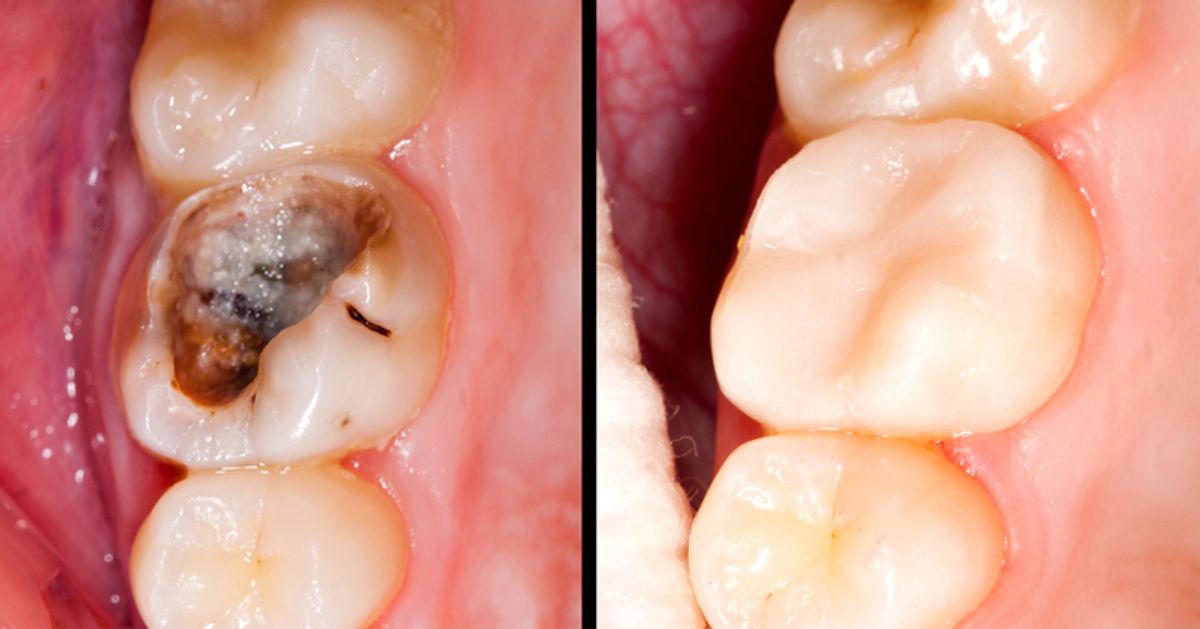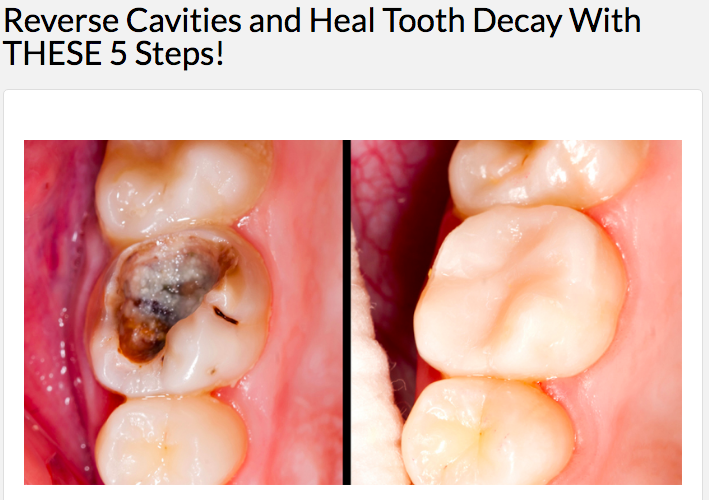David Avocado Wolfe, an alternative health guru/meme generator who believes, among other things, that chocolate is an octave of masculine solar energy, authored a widely shared post titled “Reverse Cavities and Heal Tooth Decay with THESE 5 Steps!” While the meat of his post was a list of five dietary suggestions of varying scientific validity aimed at cavity prevention, he opened his article with this questionable statement about reversing tooth decay through the use of Vitamin D:
Cavities are a type of tooth decay that occur when specific types of bacteria produce acid that destroys the tooth’s enamel as well as the underlying layer, the dentin. Many people believe that once tooth decay sets in, it’s impossible to reverse it, but the truth is, there are several ways to naturally reverse cavities.
According to a study published in the British Medical Journal, cavities and tooth decay can potentially be reversed with diet. The study divided 62 children with cavities into three diet groups. Group 1 ate a standard diet plus oatmeal, which is rich in phytic acid. Group 2 ate a normal diet and supplemented with Vitamin D, while Group 3 ate a grain-free diet and also took Vitamin D.
Researchers found that Group 1, who had a diet high in grains and phytic acid, had an increase in cavities. Group 2 showed improvements in cavities, while Group 3, who followed a grain-free diet with nutrient-rich foods and a Vitamin D supplement, saw the greatest improvements. Nearly all of the cavities in Group 3’s participants were healed.
The claims of “reversing” tooth decay were misrepresented with before-and-after photographs of a tooth exhibiting a deep cavity that was seemingly restored to its original pristine state, which were also used as the featured image when the post was shared on social media:
The study Wolfe cited was published in a 1932 issue of the British Medical Journal under the title “Remarks on the Influence of a Cereal-Free Diet Rich in Vitamin D and Calcium on Dental Caries in Children,” and its actual conclusions were outlined well by the three points included in its summary:
1. A group of children averaging 5.5 years of age were given a cereal-free diet rich in vitamin D and calcium for a period of six months. The teeth of the children were defective in structure (hypoplastic), and much active dental caries was present at the beginning of the investigation.
2. Initiation and spread of caries were almost eliminated by these diets, and the results were better than those of the previous investigation in which-the vitamin D alone was increased in a diet containing bread and other cereals.
3. Active caries was arrested on this cereal-free diet to a greater extent than in the previous investigations, when cereals were extensively used.
Wolfe claimed that this study showed it was possible to regenerate the material lost to cavities (or dental caries), but it does not. Instead, it reported that children with previously documented cases of thin or deficient (i.e., hypoplastic) enamel displayed signs that the progress of their tooth decay slowed or “almost” halted when they were put on a vitamin D-rich diet that also restricted cereal, thus preventing additional cavities from forming.
Affecting the processes that regulate tooth enamel through diet is not a new or groundbreaking concept. Enamel — a mineral not composed of living cells — is constantly being destroyed or remineralized based on the ecology of one's mouth, as described in a review paper published in the Journal of the American Dental Association:
The process of demineralization and remineralization is a dynamic process, with periods of demineralization interspersed with remineralization. The effects of demineralization can be reversed if there is adequate time between acidogenic challenges to allow for remineralization to occur.
Claims that vitamin D can aid in the remineralization part of that process are not universally accepted, however. A 2013 meta-analysis of clinical studies investigating links between vitamin D and cavities made the (qualified) suggestion that vitamin D might play a role in the prevention of cavities, but this finding has been challenged by more recent research.
Regardless, creating or repairing dentin — the deeper but still primarily mineralized portion of your tooth whose decay necessitates a filling — is an entirely different beast. Of the three different kinds of dentin (primary, secondary, and tertiary), tertiary is the only kind that does anything close to regrow, and this new material acts only to slow or stop the growth of a cavity, not reverse it. Even if it could refill the area degraded by a cavity (which it can't), that replacement material would be weaker than the material it replaced.
Finally, to actually generate anything close to a natural dentin “filling”, you would have to generate new dental pulp cells, the living tissue that leads to the creation of dentin. Food — vitamin D notwithstanding — doesn’t spontaneously turn into living dental pulp cells, nor does it facilitate the spontaneous generation of them. Unless your diet consists of a healthy serving of human stem cells and has the benefit of an extremely precise set of laboratory-regulated conditions, the food you eat will not produce new ones.


